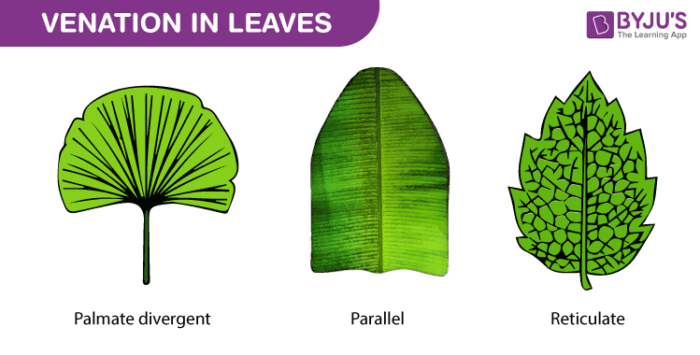Leaf venation is the term used to describe the arrangement of veins in a leaf lamina.
Leaves are the most important vegetative structure. They perform photosynthesis. Leaves develop from shoot apical meristems and are borne on the stem at nodes. Leaf base, lamina and petiole are the three parts of a leaf.
Download the Complete Guide to NEET UG Prep
Download Now
Lamina is also known as a leaf blade. It has veins and veinlets. The middle prominent vein is known as the midrib. Veins provide rigidity to the leaf lamina and are also involved in the transport of food, minerals and water.

Leaf venation tells about the pattern of veins and veinlets in the leaf lamina. Leaf venation is of two main types. They are:
- Reticulate Venation – In this type of venation, veinlets form a network. Reticulate venation is generally present in the dicotyledonous plants.
- Parallel Venation – In this type of venation, veins run parallel to each other. Parallel venation is generally a characteristic of monocotyledonous plants.
Some leaves show dichotomous venation, e.g. in Gingko biloba. The veins branch from each other like tree branches.
Veins contain vascular bundles, i.e. xylem and phloem cells, which transport water and minerals to leaf lamina and sugar to the rest of the plant parts, respectively.
This was in brief about Leaf Venation. Learn more about other related concepts for NEET, only at BYJU’S.
Recommended Video:
Parts of a typical Leaf | BIOLOGY | NEET

Further reading: